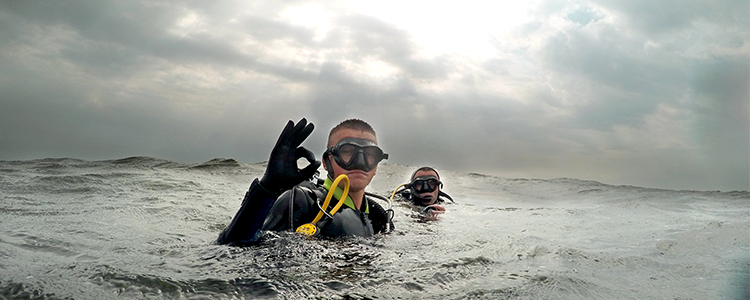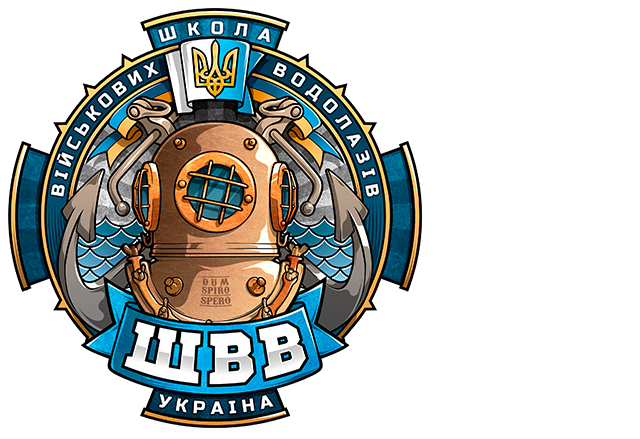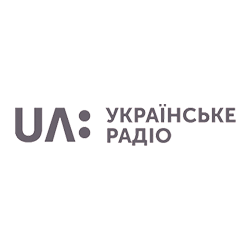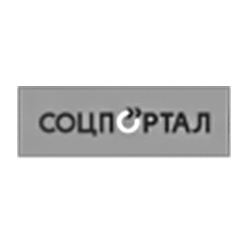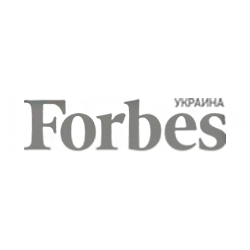Last year, a very special unit, an Airborne Rescue Group (ARG) of the 10th Naval Aviation Brigade, addressed The School of Military Divers instructors team seeking their assistance. They wanted our coaches to participate in organization of a training course on diving. You may ask what links Naval Aviation to Airborne Rescuers, and – moreover – to diving? The matter is, any aviation squadron has a special company whose task is to rescue the pilots who happened to get downed or injured over enemy territories.
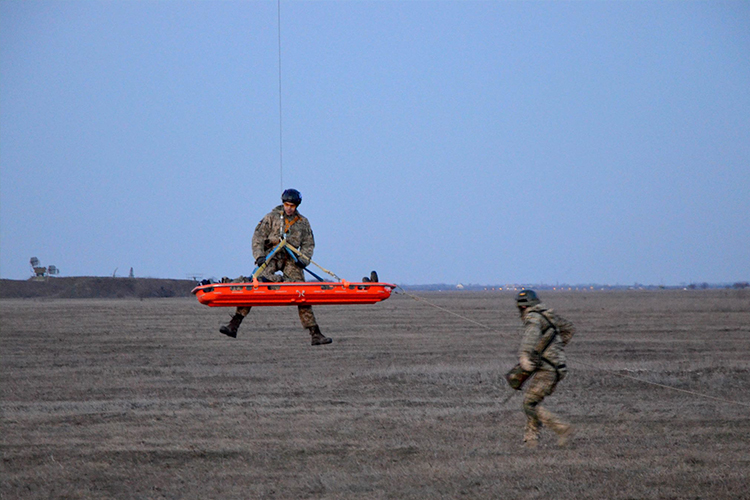
The Naval Aviation Brigade which forms a part of the Ukrainian Naval Forces, also incorporates such unit. The Airborne Rescue Group’s key responsibilities include rescuing the crews of the aircraft and helicopters damaged in action; convoying the ships of the Ukrainian Navy during military exercises, providing parachuting services for the Marines and many other things.
As long as naval aviators operate mostly above the water, the Airborne Rescue Group’s professional training program, in addition to sky-diving, mountaineering, and medical training, includes rescue diving skills. A fighter serving in the Airborne rescue group must be a good swimmer and diver possessing high skills in handling professional equipment. His immediate tasks lie in landing on water from an aircraft or helicopter, finding injured on the surface, unfolding a rescue boat or evacuating the injured onboard of a helicopter and providing first medical aid for them.
Still, there is a number of other emergency missions the rescue paratroopers have to implement. The group gets also often engaged in nation-wide search and rescue activities on the sea. This means, under any weather conditions, day or night, immediately after the flight clearance command, the servicemen of the ARG are ready to evacuate an injured sailor from a commercial vessel or rescue fishermen who got in trouble at stormy sea.
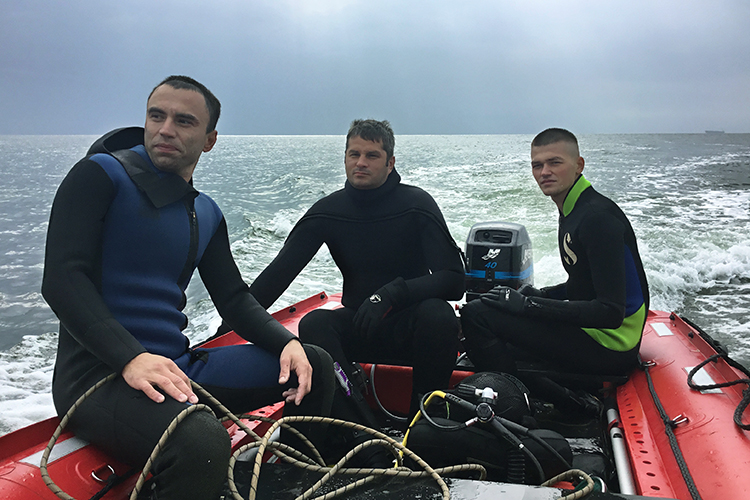
In October of 2018, near the port of Yuzhnyi, the instructors of the School of Military Divers project gave a short intensive diving course for the rescue paratroopers. At the same time, our coaches noticed that the unit’s equipment was rather outdated and inappropriate. Everything they had was a few ten-years-old neoprene swimsuits, two Soviet ABM-7 scuba gears and a small motor boat presented to them by volunteers!
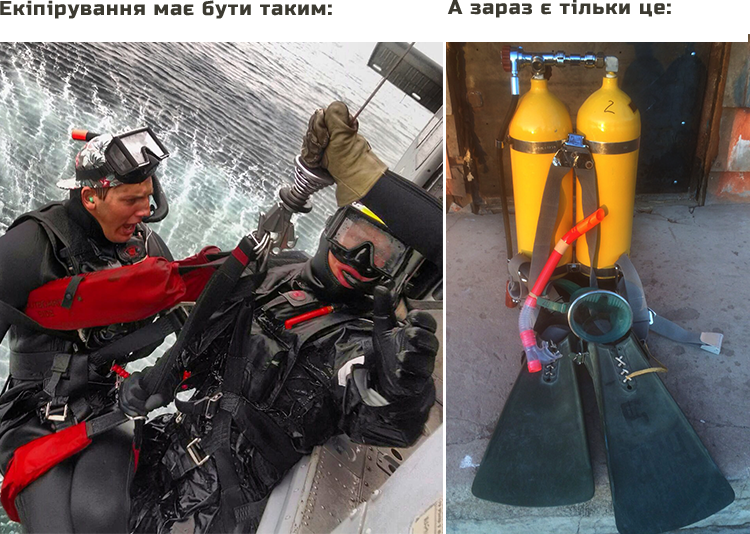
That time, it was fellow divers of a special National Guard unit (whom we also used to train last year) who came to help: out of solidarity existing in the world of diving, they provided two kits of equipment for the training course. As the ARG fighters said, they do not experience any problems with sky-diving gear – the latest systems of Ukrainian origin have just been supplied to them. But as regards diving equipment, the situation is far worse.
The main problem is the impossibility of implementing their assigned tasks in winter time as they lack special dry type diving suits. While wearing a thin neoprene swimming suit which is only 5mm thick, a diver can perform his duties underwater and stay alive for just a few minutes. This means the majority of their tasks cannot be performed due to inappropriateness of their equipment.
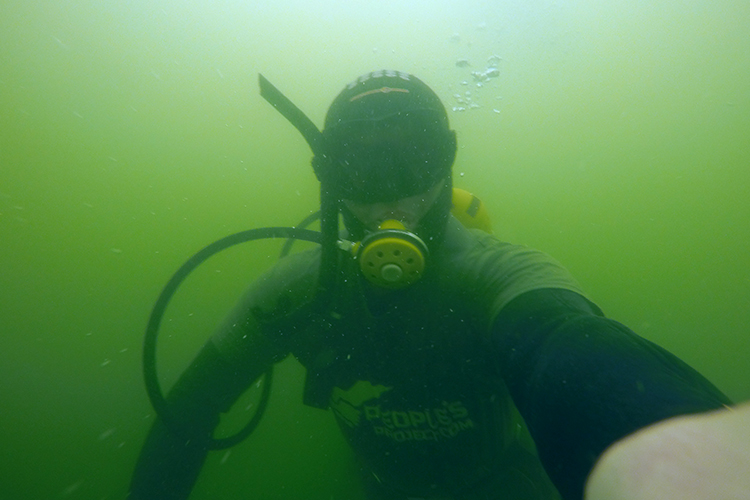
We decided to support our naval aviators and send them some gear which includes: two special diving suits of a rescue paratrooper Military rescue swimmer drysuit and two special life jackets Para swimmers west.
Diving suits feature special ergonomic design that does not limit a diver’s movements while swimming; they are light-weight (about 2kg) – the weight that practically equals to that of a standard military uniform. At the same time, they are made of special membrane fabrics which is easily ventilated. This implies divers are able to work wearing these for long hours carrying out their missions in any weather conditions with no risks to experience overheat or hypothermia. The diving suits equipped with special insulator belong to the A class thermal protection which allows a diver to work in water with temperature +2 С० up to 6 hours! The suits’ sizes can be easily adjusted to fit any diver in combat service and on combat missions.
Rescue life jacket constitutes an inseparable part of a rescue diver’s equipment: it is designed to keep the head above the water. It can be blown up either by a diver himself or by means of a mini container with carbon dioxide (in case of emergency). The life jacket doesn’t prevent a diver to put his parachute or a suspension system on.
Along with the gear transfer, the instructors of the School of Military Divers are going to conduct another training on diving skills for the fighters of the Airborne rescue group. Thus, the current stage of the Project will substantially enhance the naval aviators’ possibilities in terms of search and rescue on the sea, since your equipment will allow the rescue paratroopers to work in the severest weather conditions.
In 2016 we realized the first stage of the project: we taught swimming (from the scratch) the servicemen of the Sea Guard of the State Border Guard Service of Ukraine on the Sea of Azov and bought and sent them equipment for more than a 100,000 hryvnias. The results of this work exceeded our boldest expectations!

Last year we continued training, for the servicemen to be able to meet the standards of military diving that are rather high: the guys need to continuously improve their skills and refine their professional knowledge.
Within the second stage, we supported training and equipped their maintaining teams who carry out operational patrols at sea and maintain the naval infrastructure facilities in fit and safe condition. Among the other activities, they learned to hold their breath, to work blind, to rescue people on water and find explosives under the sea.
For the two years of the School of Military Divers’ existence we provided assistance to many diving units, namely to the 73rd Dozor-M Naval special operations center, the Center for De-mining, and other military units.
- We taught divers; bought new and maintained their present diving gear; helped to organize a swimming competition and a triathlon tournament.
- The Naval Special Forces fighters today work in the equipment we bought them; the Sea Guard servicemen protecting the waters near Mariupol, have been trained and equipped within our Project.
- Last year, during the water obstacle course completion, the gear we sent to our military, helped the divers of the Center for De-mining to save three people and pull out two drowned APCs from underwater.
- One of the Project’s former students, a sea guard, took part in the arrest of the Russian Nord vessel.
- Also, thanks to our consulting assistance, the Ukrainian Naval Forces for the first time over many years have managed to renew teaching of underwater welders which is a unique and highly demanding diving occupation.

Within the third stage of the project, we spent 243 937 hryvnias for purchasing of diving equipment and rent of a special pool in the city of Odesa. The team of instructors provided the cadets with free diving equipment, manuals and handbooks, literature, mine and explosives models and the rest of materials necessary in the course of teaching process.
The divers got trained both in the pool and in the open waters. During the course we trained their swimming and underwater wrestling skills; exercised some special techniques developed by the US Navy Seals, as well as mastered their handling of the closed cycle apparatuses and underwater scooters.




